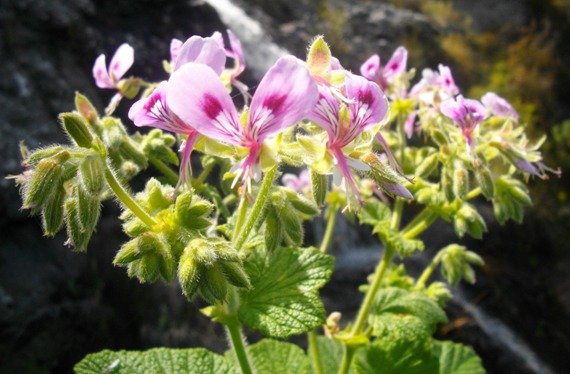Pelargonium papilionaceum dominant upper petals

Author: Ivan Lätti
Photographer: Thabo Maphisa
The flowers of Pelargonium papilionaceum, the butterfly pelargonium, grow on long stalks in clusters (pseudo-umbels) of five to twelve on hairy pedicels. They have the usual Pelargonium five-petalled flower structure, although it is the upper petal pair that brought the butterfly wing resemblance, also the eponymous specific and colloquial names. The lower three petals are narrow, straight, inconspicuous and easily missed.
Flower colour varies between pale pink and carmine. The two large upper petals have dark purple blotches in the centre and white ones lower down, embellished by fine, dark carmine line patterns. Seven pinkish stamens protrude conspicuously from each flower. The flowers appear from the end of winter into summer.
The fruit of P. papilionaceum splits into five parts, mericarps forming one schizocarp, each mericarp with a long tail-like attachment. These attachments perform a seed-burying service through a corkscrew action once the seed arrives on the ground after dispersal by the wind (Bean and Johns, 2005; iNaturalist; www.plantzafrica.com; www.chilternseeds.co.uk).

